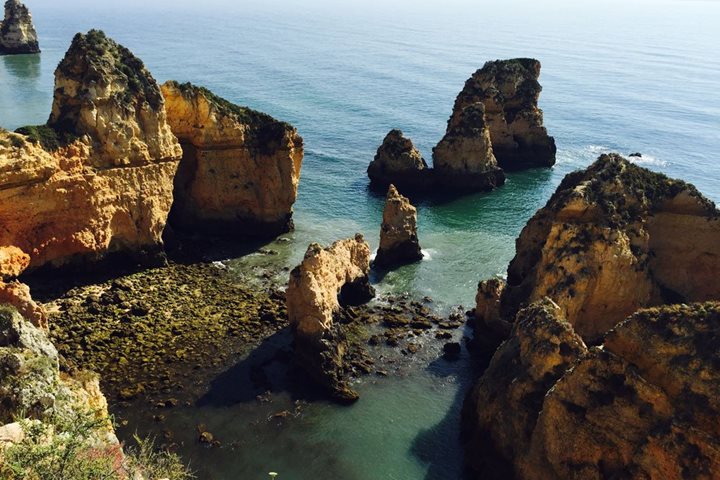The red granite mountains of Corsica rise steeply from the deep aquamarine blues of the Mediterranean, one sculpted summit upon another, cloaked in fragrant shrubs and small trees. The cliffs and weird wind-cut ventifacts seem to glow with hundreds of subtly different warm colors: red, pink, orange, carmine, ochre, all set off by the thousand greens of the shrubland around them. You may come to Corsica thinking of it as the birthplace of Napoleon Bonaparte, but that idea becomes irrelevant and vanishes on the first sight of the island itself. It is a place of tiny creeks threaded though shady boulder-choked canyons, wide beaches of golden sand at the foot of the mountains and quiet shadows of highland pine forests, all surrounded by the wide blue of the sea.
We began our day with an exploration of the Scandola Nature Reserve from our anchorage in the Gulf of Girolata. This UNESCO World Heritage site is a part of the Corsica Regional Park, which has provided protection for the rare plants and animals of the region since 1930. Today the reserve has both terrestrial and marine components, so exploring it by Zodiac, on the water at the foot of the red cliffs, seemed the perfect way to get to know it better. We discussed the geological history of the volcanic crags, caught the scent of the Maquis vegetation on the sea breeze, saw Kestrels gliding on the wind, Blue Rock Thrushes among the red rocks and - down through the crystal blue water – scarlet anemones and rich beds of Neptune seagrass.
For the afternoon, National Geographic Orion repositioned to an anchorage off the lovely beach of Plage d’Arone, where we made a landing by Zodiac to meet coaches for excursions into the granite highlands. The surf was up a bit, so we were treated to an exciting stern-first landing, skillfully handled by the drivers and shoremen. Once on the beach we set off in the coaches, some of us for a short but rugged hike among the shady pines and strawberry trees, and others on a panoramic tour from one spectacular viewpoint to another, culminating with a visit to the exquisite little village of Piana. Both excursions followed the same narrow road, higher and higher above the sea, winding through sunny grasslands and dramatic calanques – precipitous valleys where our drivers had to use all their considerable skills to maneuver our large vehicles around the hairpin curves among the towers of pink granite.
This was the Corsica you will not find in the history books. This was the Corsica, beautiful and wild, that you must come and discover for yourself.




